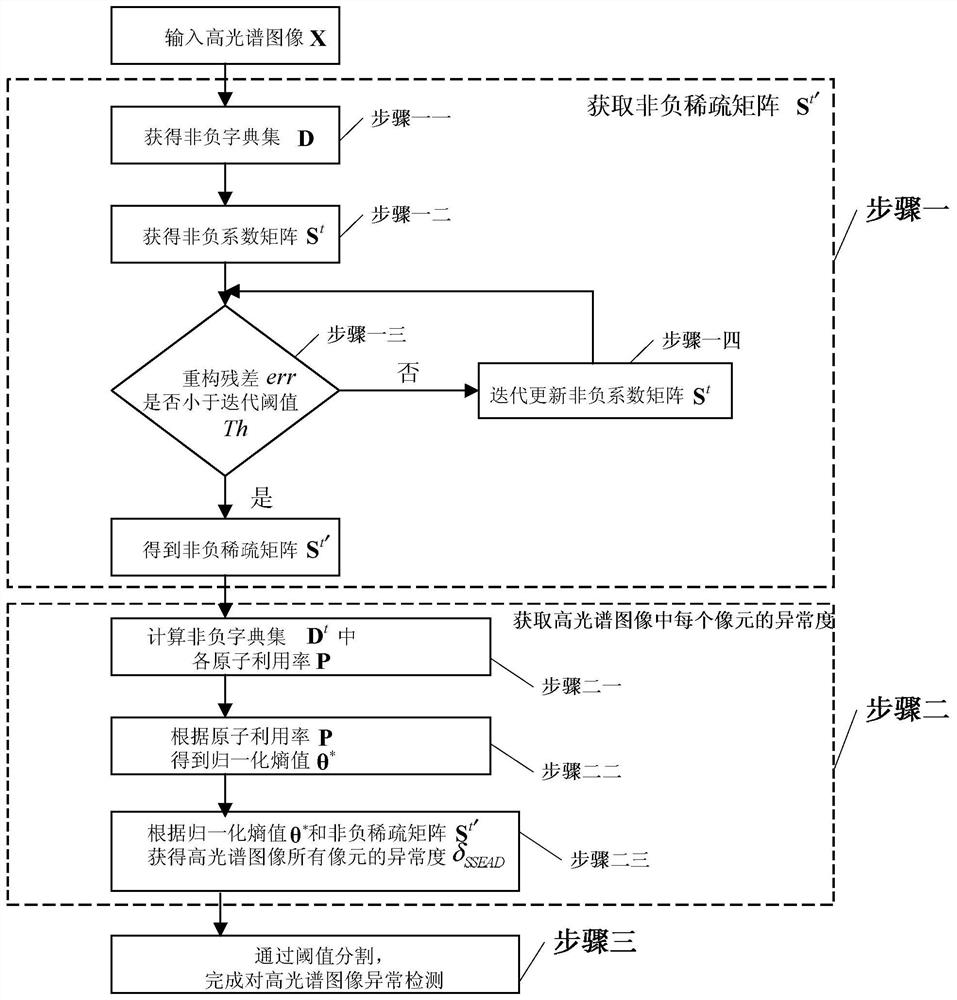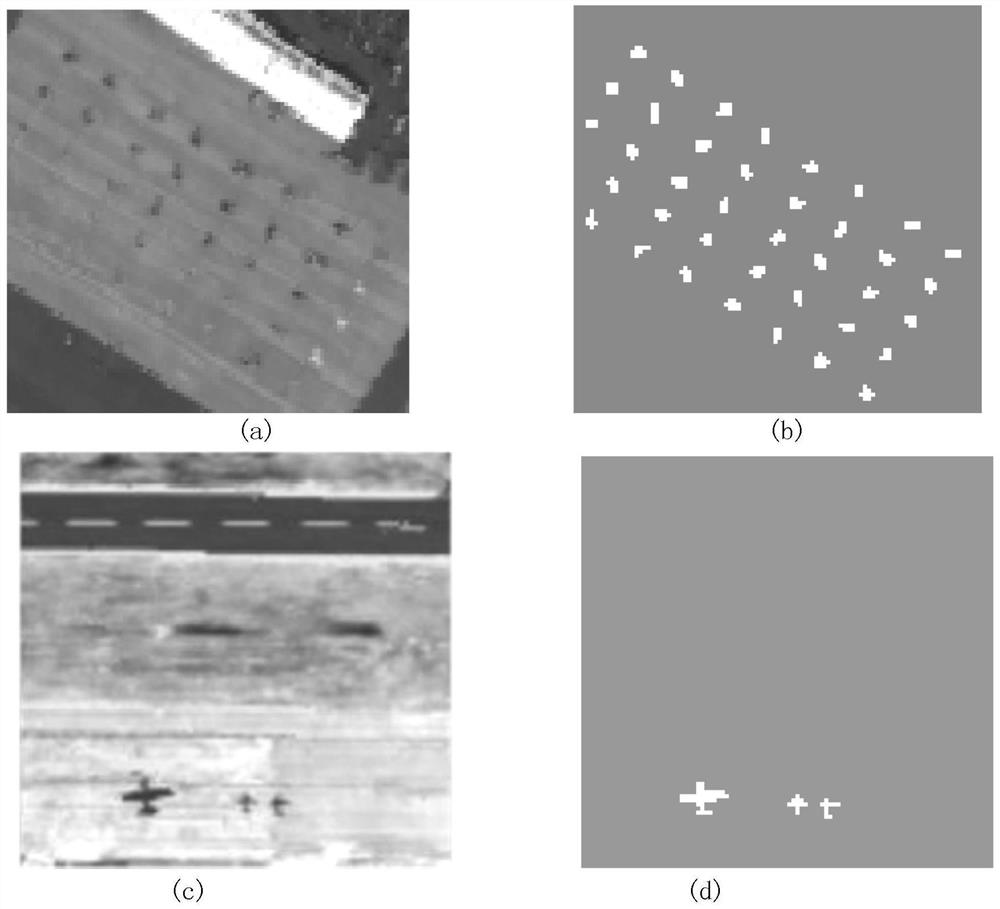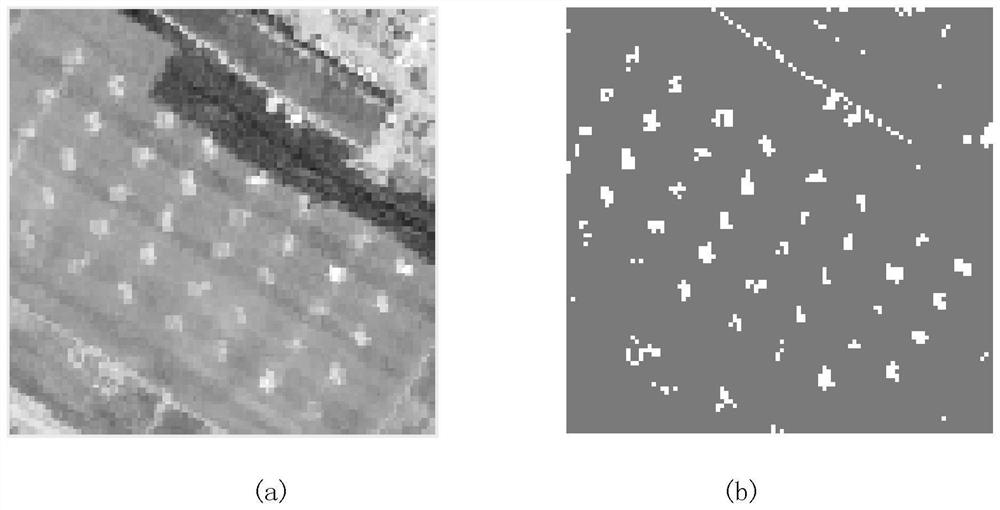Hyperspectral Image Anomaly Detection Method Based on Non-negative Sparse Feature
A hyperspectral image, non-negative sparse technology, applied in the field of hyperspectral anomaly detection, can solve the problem of low accuracy of hyperspectral images, and achieve the effect of improving accuracy and accuracy
- Summary
- Abstract
- Description
- Claims
- Application Information
AI Technical Summary
Problems solved by technology
Method used
Image
Examples
specific Embodiment approach 1
[0047] Specific implementation mode one: see figure 1 Describe this embodiment, the hyperspectral image anomaly detection method based on the non-negative sparse characteristic described in this embodiment, the method includes the following steps:
[0048] Step 1: Obtain the non-negative sparse matrix S of the spectral image according to the hyperspectral image X t′ ;
[0049] Step 2: According to the non-negative sparse matrix S t′ Anomaly detection is performed on the hyperspectral image X, and the anomaly degree of each pixel in the hyperspectral image is obtained;
[0050] Step 3: Determine whether the pixel corresponding to each abnormality degree is abnormal according to the abnormality degree of each pixel in the hyperspectral image by means of threshold segmentation, so as to complete the abnormality detection of the hyperspectral image.
[0051] In this embodiment, in step 1, non-negative constraints are used to improve the sparse representation model of the hypers...
specific Embodiment approach 2
[0052] Specific implementation mode two: see figure 1 Describe this embodiment. The difference between this embodiment and the hyperspectral image anomaly detection method based on the non-negative sparse characteristic described in the first embodiment is that in the first step, the non-negative sparseness of the spectral image is obtained according to the hyperspectral image X Matrix S t′ The specific process is:
[0053] The hyperspectral image X is processed by the non-negative sparse coding method, and the non-negative sparse matrix S of the hyperspectral image is obtained. t′ .
[0054] In this embodiment, due to the addition of non-negative constraints, the sparse representation model of the hyperspectral image has obtained a more accurate and reasonable physical interpretation; Negative values in the coefficient matrix will cause a certain degree of information loss. Using non-negative constraints can better solve this problem, and finally obtain a more accurate s...
specific Embodiment approach 3
[0055] Specific implementation mode three: see figure 1 This embodiment is described. The difference between this embodiment and the hyperspectral image anomaly detection method based on non-negative sparse characteristics described in Embodiment 1 or 2 is that in step 2, according to the non-negative sparse matrix S t′ Perform anomaly detection on the hyperspectral image X, and the specific process of obtaining the anomaly degree of each pixel in the hyperspectral image is as follows:
[0056] Non-negative sparse matrix S for hyperspectral images t′ Sparse score estimation is performed to calculate the abnormality of each pixel in the hyperspectral image.
[0057] In this embodiment, the present invention combines the hyperspectral image non-negative sparse coding theory and the sparse score estimation algorithm, and proposes a hyperspectral image anomaly detection method based on the non-negative sparse characteristic. In this process, the sparse nature of the anomaly is f...
PUM
 Login to View More
Login to View More Abstract
Description
Claims
Application Information
 Login to View More
Login to View More - R&D
- Intellectual Property
- Life Sciences
- Materials
- Tech Scout
- Unparalleled Data Quality
- Higher Quality Content
- 60% Fewer Hallucinations
Browse by: Latest US Patents, China's latest patents, Technical Efficacy Thesaurus, Application Domain, Technology Topic, Popular Technical Reports.
© 2025 PatSnap. All rights reserved.Legal|Privacy policy|Modern Slavery Act Transparency Statement|Sitemap|About US| Contact US: help@patsnap.com



